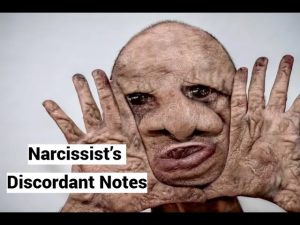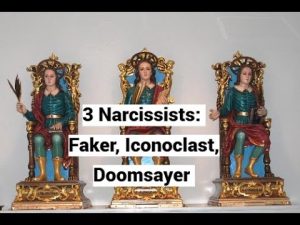When Shame, Guilt, Remorse Drive Abuse (Alloplastic Defenses, Reaction Formation, Affect Matching)
Introduction to the Topic
- The meeting focused on the relationship between remorse, guilt, shame, and abusive behaviors, particularly how these emotions can sometimes contribute to abuse rather than inhibit it. An introduction to the speaker, Sanvaknin, author and psychology professor, was given. [00:00]
Emotions in Narcissism and Psychopathy
- Common belief that narcissists and psychopaths lack remorse and guilt. While narcissists possess a reservoir of shame they try to avoid, they rarely experience guilt or remorse. Psychopaths are mentioned as not experiencing shame, guilt, or remorse at all. [00:20]
- Borderline personality disorder (BPD), secondary psychopathy, and histrionic personality disorder show some presence of shame, guilt, and remorse after misbehavior. [02:15]
The Role of Shame, Guilt, and Remorse
- These emotions are inhibitory and socialized responses that stop abusive behavior by acting as brakes on misconduct. They are generally expected to desists abusive actions due to the internalized societal norms and conscience. [04:35]
- Contrarily, in individuals with dark or Cluster B personality traits, shame, guilt, and remorse may trigger aggression and abusive behaviors instead of inhibiting them. [06:00]
Mechanisms Linking Shame, Guilt, and Remorse to Abuse
Three key mechanisms were outlined explaining how these negative emotions can lead to further abuse:
- Aloplastic Defenses
- Individuals blame others (victims or intimate partners) for their feelings of guilt, shame, or remorse, externalizing their aggression in response. The abuser sees the source of their negative feelings as the cause and becomes angry at that person, thus justifying abuse as a punishment. [07:10]
- Example: A borderline or narcissist blames their partner for making them feel ashamed or guilty, thus shifting blame and fueling abusive behavior. [08:45]
- Effective Matching
- Here, the individual embraces their negative feelings as intrinsic to their identity and justifies continued misbehavior as part of their “authentic” self, ignoring the need to change. They accept guilt and shame as the “price of being me,” which perpetuates the abuse cycle. [11:00]
- Reaction Formation
- The individual publicly displays behaviors that contradict or negate parts of themselves they reject (e.g., homophobia masking latent homosexuality). This defense mechanism includes projecting their own shame or guilt onto others through abuse, effectively transferring those negative emotions to the victim. [13:00]
- Through projection and projective identification, they assert that “others” should feel the guilt or shame instead of themselves, resulting in abusive attitudes and actions. [14:45]
Conclusion and Final Remarks
- The speaker humorously concluded by attributing guilt and shame to viewers for watching the entire video and showed no remorse for presenting the material. [16:00]
This detailed breakdown highlights the nuanced perspective on how remorse, guilt, and shame, while generally inhibitory, may paradoxically fuel abuse in certain personality disorders through specific psychological mechanisms.






